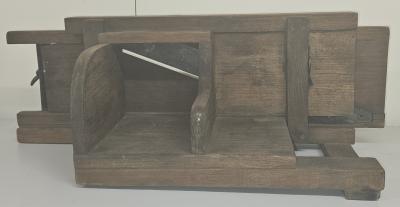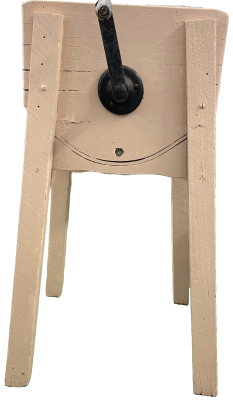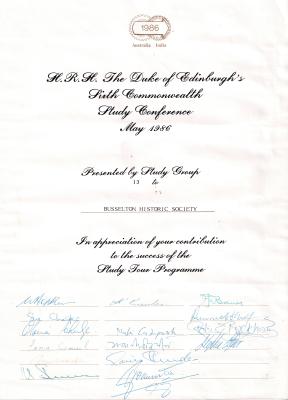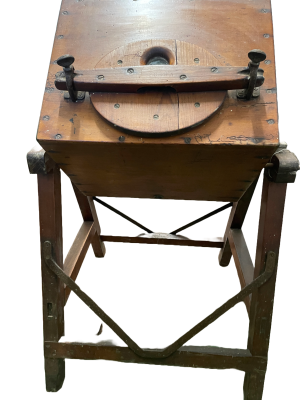WW2 Water Bottle
1944An aluminium WW2 US water canteen & cup. The canteen has one quart capacity with a curved "kidney shape" cross-section. The screw-on bakelite cap has a chain that has become detached from the metal eye on the canteen body. A metal cup with a folding handle, that could be used to prepare coffee, soup, etc and nests with the canteen body. The carry case for the canteen is missing.
This canteen is also known also as the U.S. Army M1910/43 Horizontal Seam Canteen and was standard issue to US troops during WWII and post war conflicts.
The origins of this canteen go back to 1909 when the Equipment Board for the U.S. military decided to replace the hemispherical canteen in use and with a new aluminium one quart canteen. The basic design features for the new canteen were, it was to be made of a durable light metal, one quart capacity, have a curved "kidney shape" cross-section, have a screw-on cap which would attach to the canteen body by chain, have a metal cup with folding handle that would nest with the canteen body and finally have an insulated cover that would attach to a belt or pack. This design has remained standard for most of the 20th century.
The first M1910 canteens were made by Aluminium Goods Manufacturing Company (AGM Co) in 1910. In 1918 the Quartermaster Corps contracted five domestic companies to manufacture army canteens for troops serving in Europe during WW1. Information regarding maker and date of manufacture were stamped on the rear concave area or bottom. Between 10 and 11 million canteens were produced for U.S. forces in WW I.
During WII Aluminium Goods Manufacturing Company converted to wartime production of more than 400 different items for the armed forces, including airplane fuel tanks, cartridge cases, radar parts, and canteens and cooking sets. Aluminum Goods had plants in both Manitowoc and nearby Two Rivers.
Details
Details
On the handle that wraps around the base is stamped
US
A.G.M CO
1944
By early 1942 canteens were being made of stainless steel as aluminium became scarce as most supplies were diverted to aircraft manufacture. In late 1942 aluminium canteens were reintroduced but with a horizontal seam and a bakelite cap with a cork disk seal and this style this was produced from 1942 to 1945. The new screw-on cap had a recessed top to protect the chain rivet. WW II aluminium canteens have a dull finish, are marked with US, the manufacturer's initials, and the year of production.
According to records, the World War II manufacturers of M-1910 aluminum canteens (Stock Number 74-C-80) include: Aluminum Goods Manufacturing Co. (AGM Co.) (which after WW2 became Mirro); Southeastern Metals Co. (S.M.Co) and The Aluminum Cooking Utensil Co. [TACU Co).
Other items from Busselton Historical Society
- Ricketts & Thorp Bread Slicer – Manually powered
- Field Telephone
- Framed Photograph - John and Sarah Holgate (nee Harwood) wedding
- Small Painted Wooden Butter Churn on stand
- Certificate - HRH The Duke of Edinburgh's Sixth Commonwealth Study Conference May 1986
- Wooden Box Butter Churn on stand
- Green Painted Iron Cream Pump
- Milking Apron
- Mettler B5 Laboratory Scale
- Wooden Box Butter Churn
- Cherry & Sons Wooden Butter Churn
- Framed Photograph - Busselton Centenary Parade 1932
Scan this QR code to open this page on your phone ->




